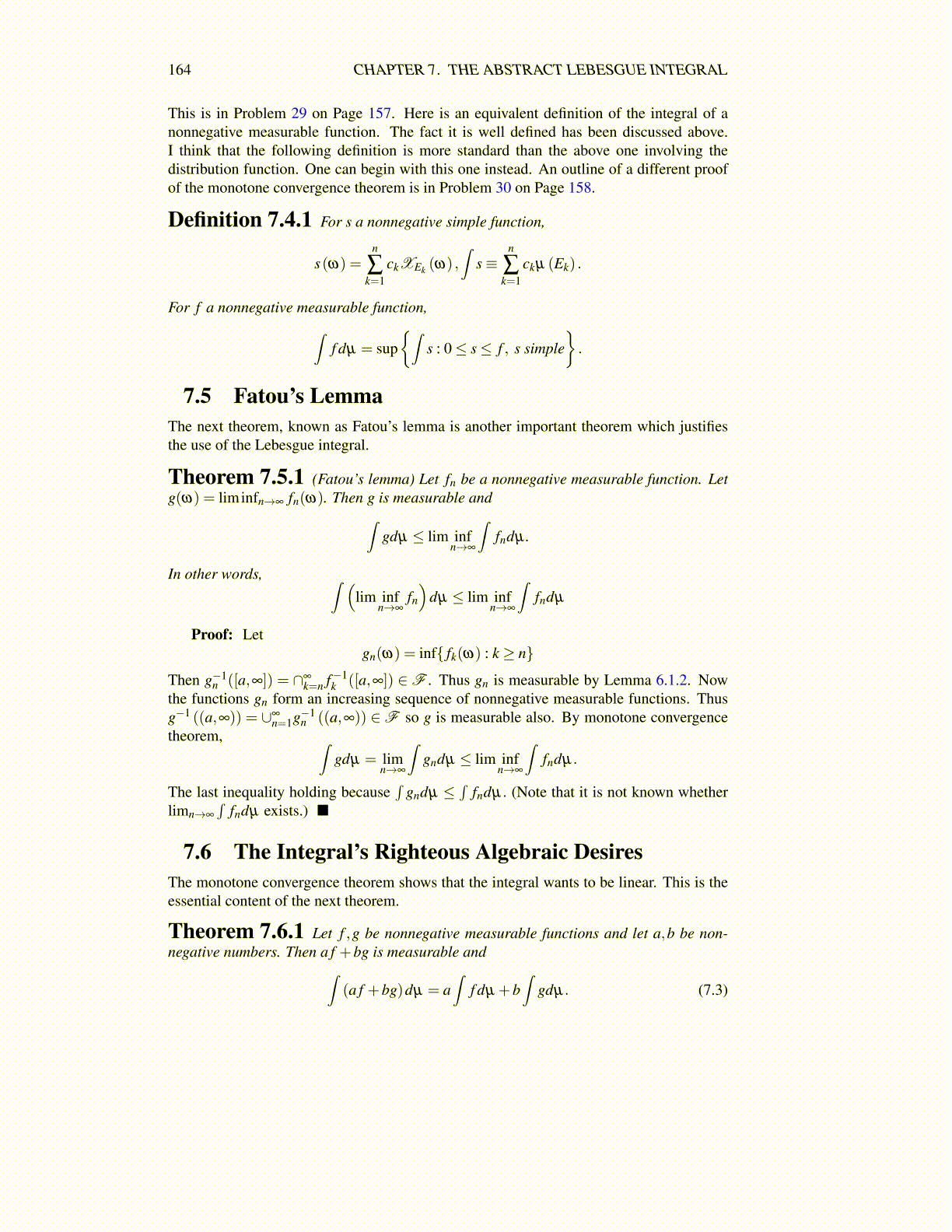
164 CHAPTER 7. THE ABSTRACT LEBESGUE INTEGRAL
This is in Problem 29 on Page 157. Here is an equivalent definition of the integral of anonnegative measurable function. The fact it is well defined has been discussed above.I think that the following definition is more standard than the above one involving thedistribution function. One can begin with this one instead. An outline of a different proofof the monotone convergence theorem is in Problem 30 on Page 158.
Definition 7.4.1 For s a nonnegative simple function,
s(ω) =n
∑k=1
ckXEk (ω) ,∫
s≡n
∑k=1
ckµ (Ek) .
For f a nonnegative measurable function,∫f dµ = sup
{∫s : 0≤ s≤ f , s simple
}.
7.5 Fatou’s LemmaThe next theorem, known as Fatou’s lemma is another important theorem which justifiesthe use of the Lebesgue integral.
Theorem 7.5.1 (Fatou’s lemma) Let fn be a nonnegative measurable function. Letg(ω) = liminfn→∞ fn(ω). Then g is measurable and∫
gdµ ≤ lim infn→∞
∫fndµ .
In other words, ∫ (lim inf
n→∞fn
)dµ ≤ lim inf
n→∞
∫fndµ
Proof: Letgn(ω) = inf{ fk(ω) : k ≥ n}
Then g−1n ([a,∞]) = ∩∞
k=n f−1k ([a,∞]) ∈F . Thus gn is measurable by Lemma 6.1.2. Now
the functions gn form an increasing sequence of nonnegative measurable functions. Thusg−1 ((a,∞)) = ∪∞
n=1g−1n ((a,∞)) ∈F so g is measurable also. By monotone convergence
theorem, ∫gdµ = lim
n→∞
∫gndµ ≤ lim inf
n→∞
∫fndµ.
The last inequality holding because∫
gndµ ≤∫
fndµ. (Note that it is not known whetherlimn→∞
∫fndµ exists.) ■
7.6 The Integral’s Righteous Algebraic DesiresThe monotone convergence theorem shows that the integral wants to be linear. This is theessential content of the next theorem.
Theorem 7.6.1 Let f ,g be nonnegative measurable functions and let a,b be non-negative numbers. Then a f +bg is measurable and∫
(a f +bg)dµ = a∫
f dµ +b∫
gdµ. (7.3)